Living in Battersea, you are familiar with the contentious luxury development popping around, while the normal residents have difficulties to afford a home in the area. There is one city where that phenomenon reached an unprecedented level, and we will explore in this article how it resonates with our local situation, especially in Nine Elms and the new Council policy.
A row of soaring skyscrapers, home to the most luxurious apartments that sold for not a few million but several dozen million: here we are not talking about the astonishing flats inside the Battersea Power station, nor the skypool built to taunt commuters on their way to Victoria station.
Thanks to some very wealthy individuals and the help of starchitects eager to expose their skills, along with complacent town planners and politician blessing, a new place of hubris is emerging fast in New York. They called it Billionaire Row, and it refers to a handful of buildings on West 57th street or around, parallel to the south side of Central Park!
Astonishing architecture
On West 57th Street you have 432 Park Avenue, 111W57, One57 and Central Park Tower. Just in front of the park entrance, on the 60th Street, you will find 220 Central South, on the right you can spot 520 Park Avenue and 252 East 57th Street and behind, on a “smaller scale”, you will also find 53W53 on the 6th Avenue. All erected within the last 7 years.
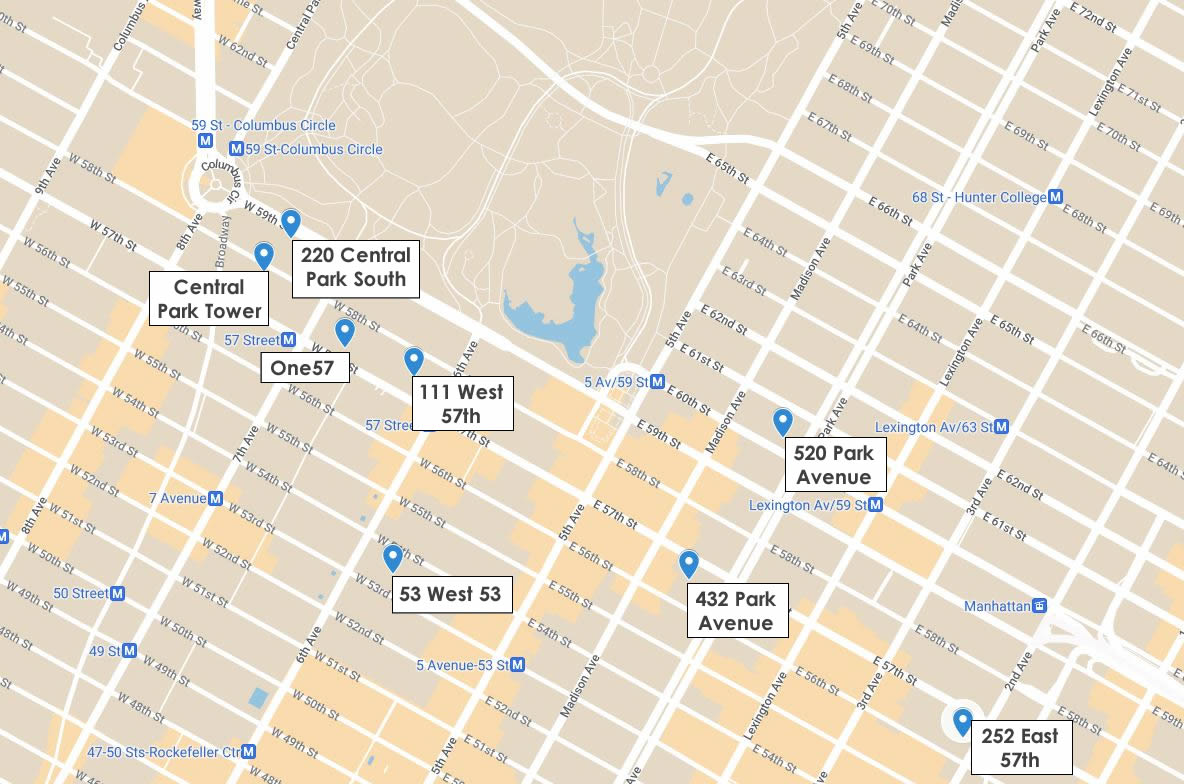
For skyscrapers, it seems that size matters and there is a competition nowadays of “who gets the biggest”, a reminiscent of a famous Freudian concept.
The Burj Khalifa in Dubai still ranks first with 828m and 163 floors. It is followed by the Merdeka in Kuala Lumpur (Malaysia) with 679m, the Shanghai Tower (China) with 632m and many others (see Wikipedia for an extensive list). One World Trade Center is 7th with 541m but with the help of an impressive mast (134m, often called “vanity height”, making the building structure in reality just above 400 meters). Africa has recently decided to enter the “competition” with Egypt planning the Oblisco Capitale, a mega-tall skyscraper of … 1000 meters above ground.
As buildings were pushing up the sky limits, architects thought they needed another challenge to demonstrate their talent: make it as thin as possible!
To be considered thin, a building needs to have a width-to-height ratio of at least 1:7. The luxurious Steinway Tower by SHoP Architects at 111 West 57th Street in New York, completed in 2021, is so far the tallest and thinnest building on earth, with a ratio of approximately 1:24 (435m and 84 floors with a plot of just 18 meters width).
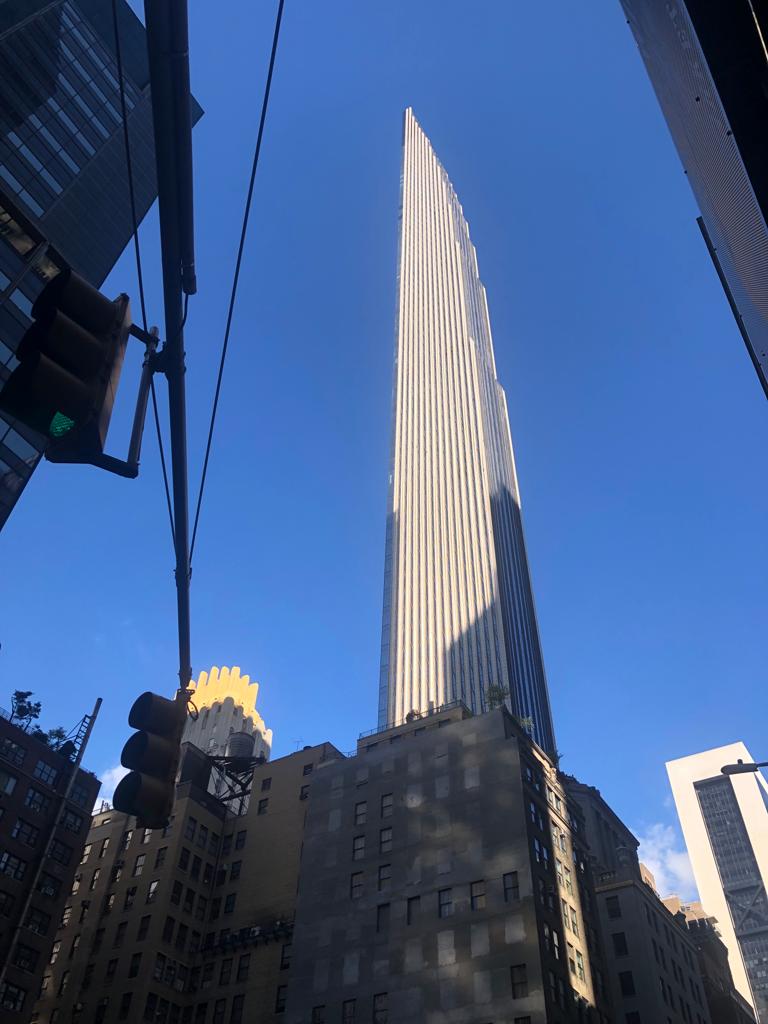
In the starchitect’s competition in Billionaire’s row of the 57th Street, it is more than Rafael Viñoly’s 432 Park Avenue (426m, 89 floors and a width-to-height ratio of 1:19) on it’s right. At the time of completion in 2015, it was the tallest residential tower in the world, but it has now been overtaken by 111 West 57th Street described above and Central Park Tower completed two years ago.
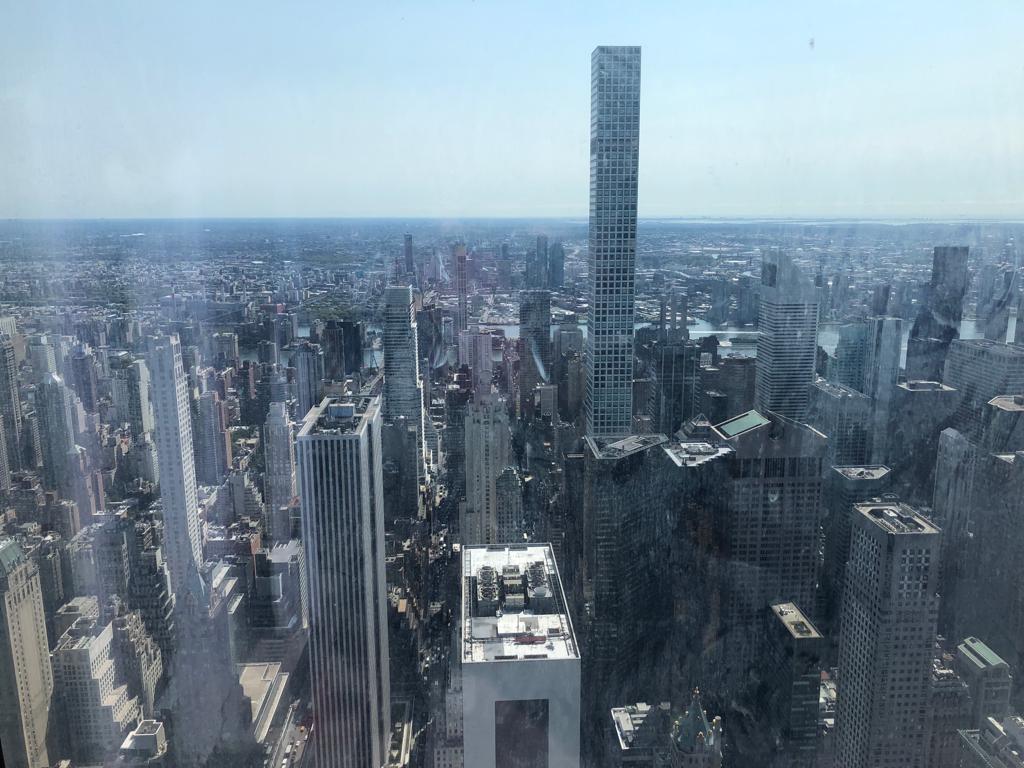
It must be noted that the Viñoly’s construction suffered structural problems (he is accustomed to the fact, as shown with his Walkie Scorchie in London) which resulted into a lawsuit in 2021. Surfacemag reported:
“Over millions of dollars worth of water damage from mechanical and plumbing issues, frequent elevator malfunctions, and unbearably creaky walls when the building shimmies during high winds”
Just a few meters away, on 225 West 57th Street, you can now see Central Park Tower, which opened 2 years ago. The tower stands at 472.4 meters with 98 floors (and currently the tallest building in NYC if you discount the antenna of One Trade Center and also one of the slimmest). Central Park Tower was designed by Adrian Smith + Gordon Gill Architecture (AS+GG).
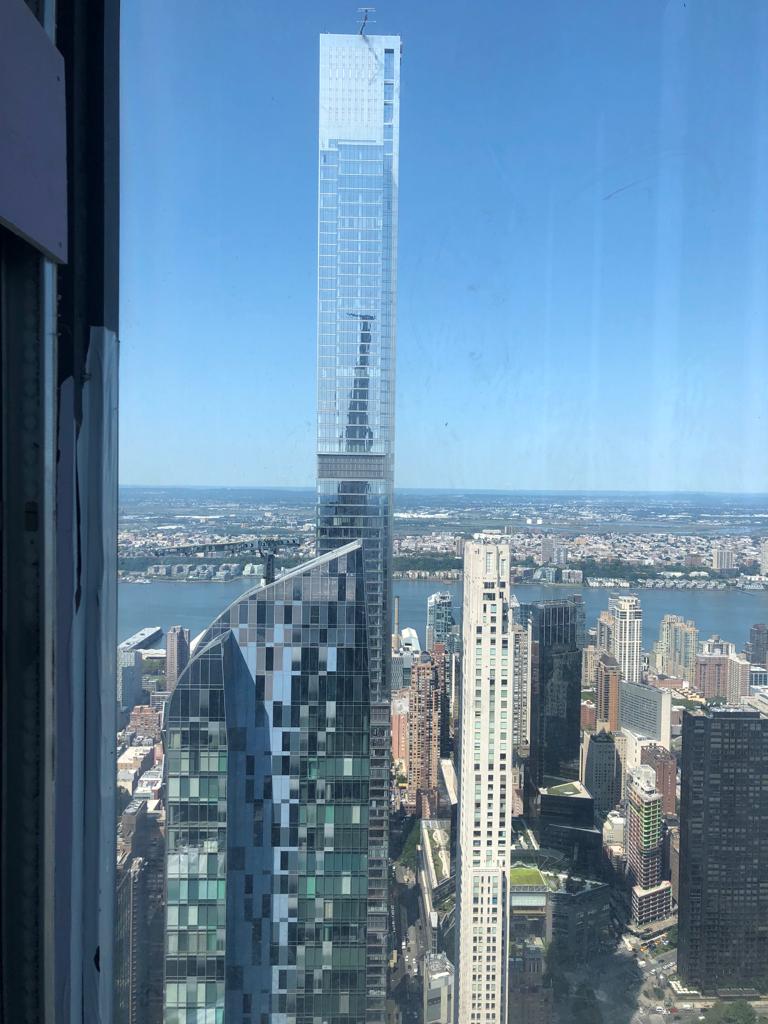
Closer to Central Park (actually just in front!) 220 Central Park South is made of 2 sections with different sizes: a 70-story tower on 58th Street and a shorter 18-story section on Central Park South. The tallest section is 290 meters tall and 70 floors. It is part of the new “pencil towers” with a ratio of only 18:1. and was completed in 2019. The tower was designed by Robert A.M. Stern Architects and hosts 118 apartments.
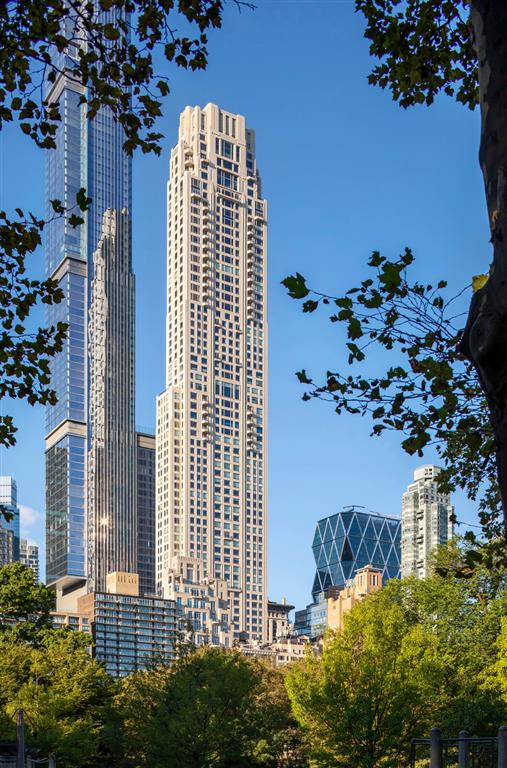
520 Park Avenue is another one designed by Robert A.M. Stern Architects and completed in 2018. It is 238 meters tall with only 35 apartments on its 64 stories.
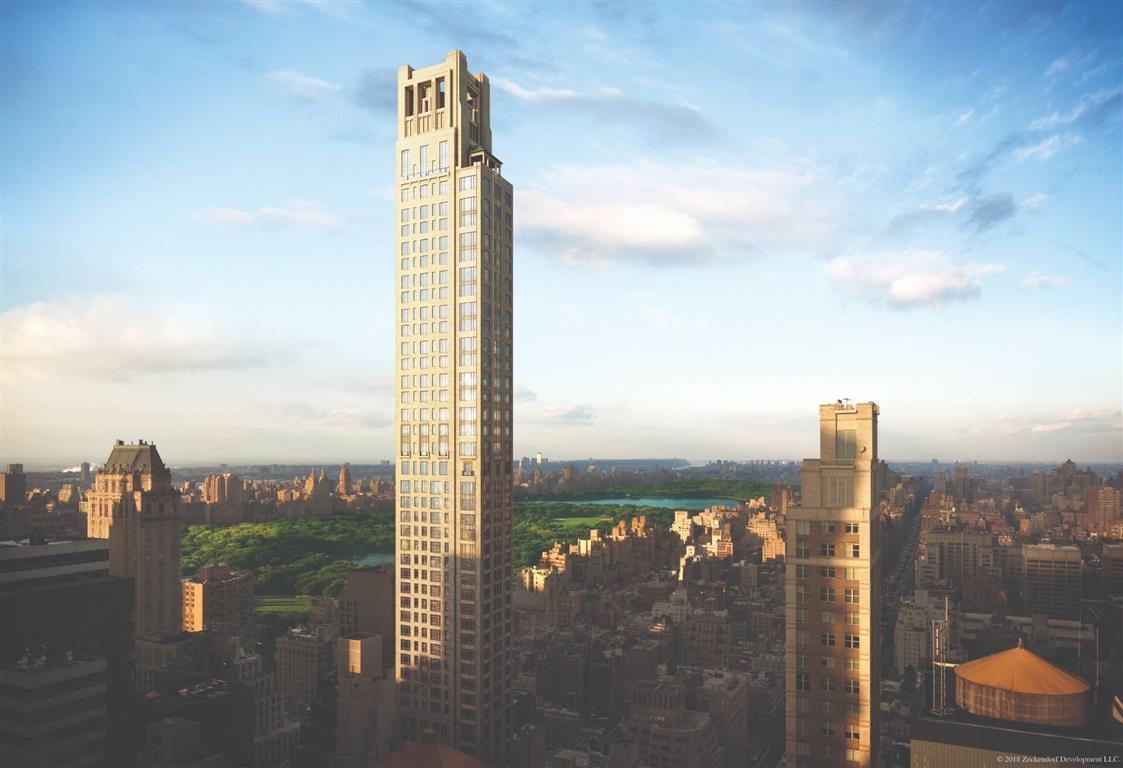
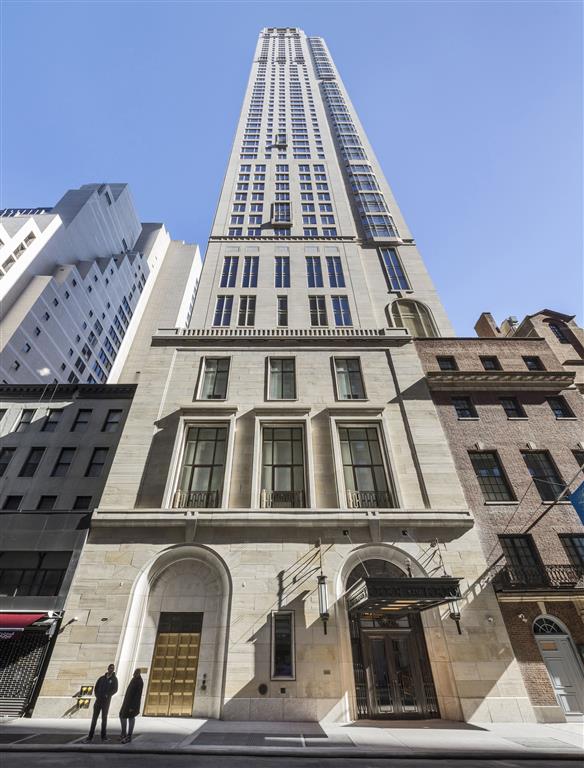
Maybe it actually all started with the ONE57 by Atelier Christian de Portzamparc. The 306 meters tall and 75 floors tower was completed in 2014 and is also considered one of the extra thin and extra expensive residential skyscrapers.
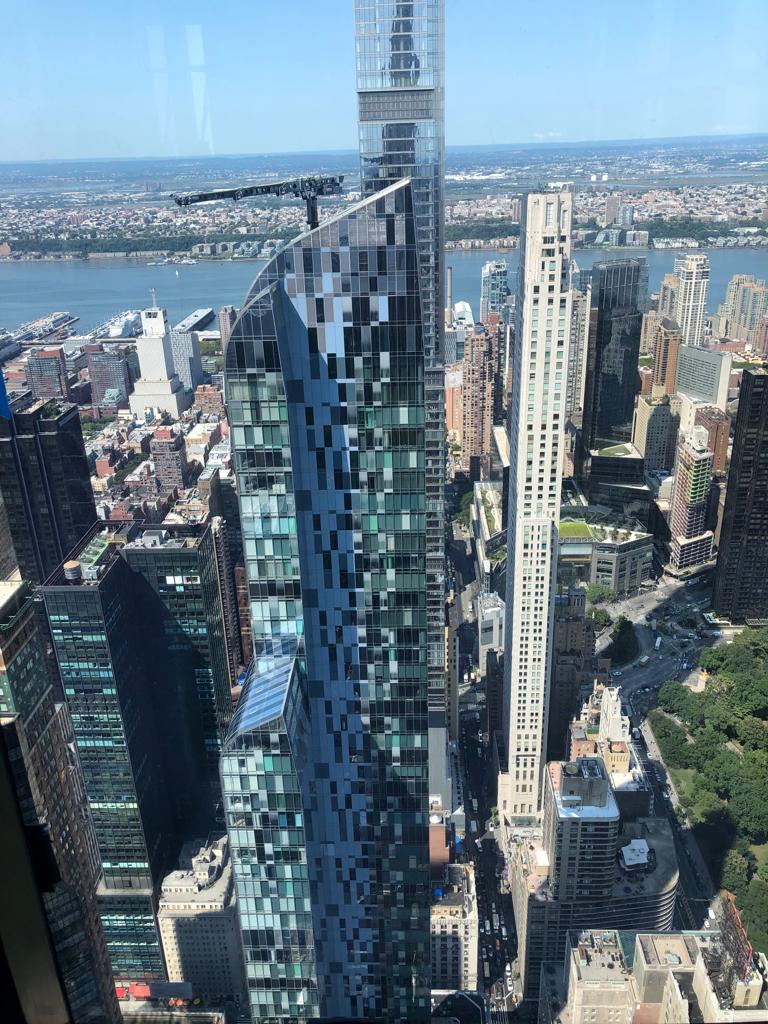
252 East 57th Street was completed in 2017 and is 217 meters tall with 65 floors. In addition to being mainly residential this building also host two schools and a Whole Foods store with other retail space. The building was designed by Roger Duffy.
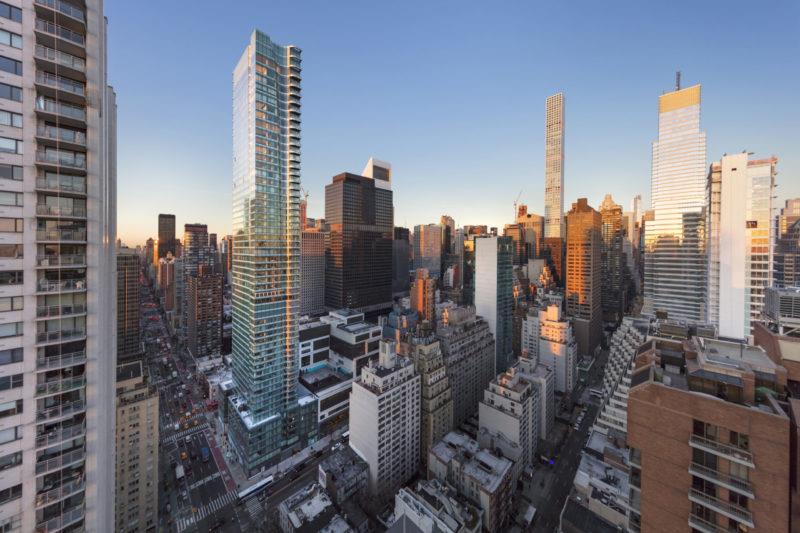
Last in our list is 53W53 (for 53 West 53, also known as Tower Verre), adjacent to the Museum of Modern Art (MoMA). It was completed in 2019 with a height of 320 meters (having been reduced by 61 meters, following protests over the original height). The 77 storey-tower contains 145 units and was designed by French architect Jean Nouvel (strangely, some floor numbers are skipped, so they display officially 87 storeys!).
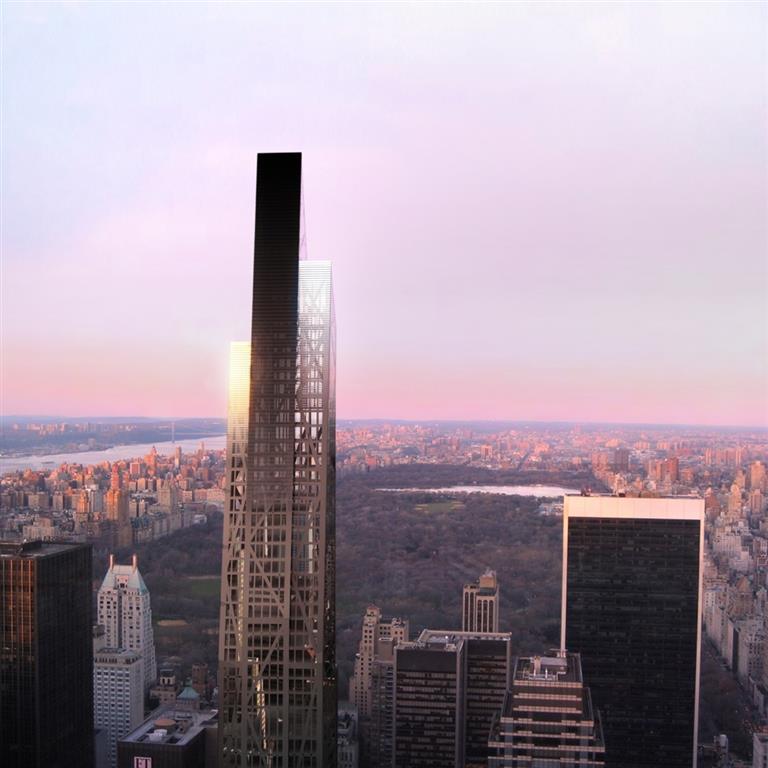
Justin Davidson, a famous architecture critic commented on the size-reduction saying:
“The inspiring arrogance of Nouvel’s tower should never have been quashed by timorous bureaucrats.”
This lover of extravaganza must have been reassured by the recent additions in New York skyline that we described above.
Astounding prices
They are not usual luxury dwellings: only the world’s richest people can afford a piece of those iconic buildings. The same way as palace buildings were a mean to display wealth and power in the past (and Versailles in France is probably the most famous example of it), those construction must be the most unique engineering firsts that we can get nowadays.
As the architecture is unique, unique is the price too.
In the architizer.com they say:
“The highest apartment [of Steinway Tower] is expected to fetch at least $100 million. This might seem high, but would be nothing out of the ordinary for New York: Billionaire Ken Griffin recently purchased the penthouse at 220 Central Park Tower for $238 million.”
In Viñoly’s building, the penthouse on the top floors was advertised $74.5m (the 748 sqm come apparently with five bedrooms and … seven bathrooms!). Fortunately, there is also a cheaper version on the 42nd floor for $17.4m, with the median unit selling for tens of millions of dollars.
For nearly half the price, only $45m, you can get a penthouse on One57. The triplex penthouse on 520 Park Avenue is worth $130 million, but prices begin at over $20 million in the tower.
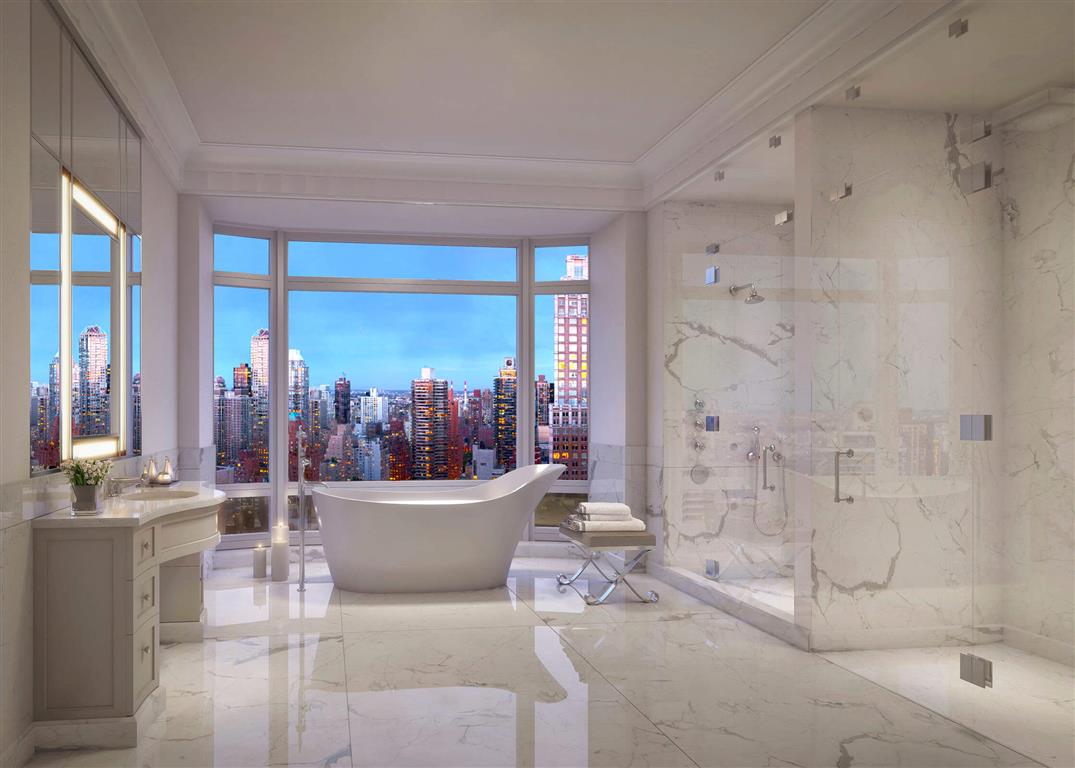
In 220 Central Park South, most of the 118 apartments are duplex apartments, most of them occupying the entire floor space. Some of the units have been recombined in order to create penthouses with multi-floors. A gigantic unit spreading from floor 50 to floor 53 was offered at $250m. Two other units are also priced in excess of $100m.
For each flat of course, the owner will also often have to pay a multiple of ten of thousand dollars per month for service charge and taxes (in addition to maintenance, you will have all the extra services for those astonishing apartments: private movie theatre, children’s playroom, swimming pool, wine cellars, fitness center… etc).
And it goes with extra cost that you could not even imagine. For instance, residents of 432 Park Avenue have an obligation to spend a minimum of $15,000 per year in the private restaurant of the tower, which has Michelin-star chef Shaun Hergatt at its helm. A sort of “canteen” for the super-rich!
A symbol of the concentration of wealth
The skyscrapers rise from the ground to touch the clouds, as a metaphoric way for 99.99% of the passer-by to remember that over there is the unreachable elite, and they are not part of it.
Those unique piece of architecture are a symbol of the concentration of wealth without much regard for the life of everyday people.
Those buildings are so tall that most of them (Central Park Tower, 111 West 57th Street or 432 Park Avenue) required the approval from the U.S. Federal Aviation Administration to be erected. The view that you get from the luxury flats of those towers are similar to views from an airplane: you are in the sky, truly!
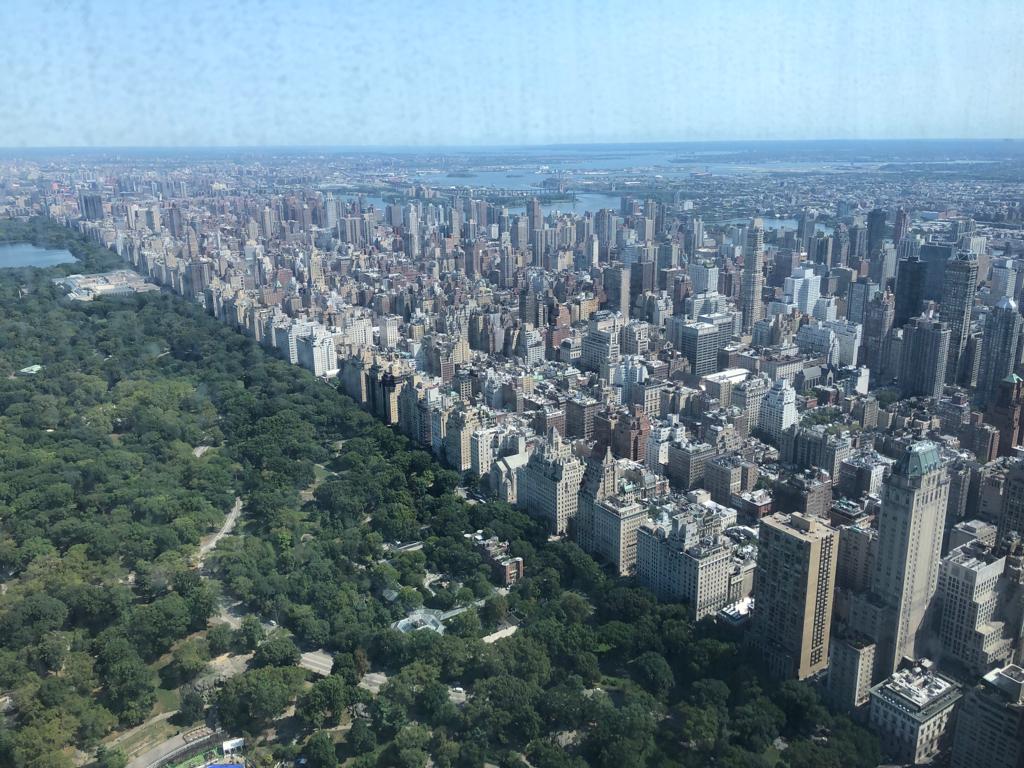
Those are not the places that even millionaires can really afford… you need to be part of the multi-millionaire and billionaire gang to afford a unit in one of those buildings.
Abramovich owns a high-floor apartment for $17 million in 432 Park Avenue. Kenneth C. Griffin, real estate developer, paid $238m in 2019 for a penthouse in 220 Central Park South.
In the same building, billionaire hedge fund manager Daniel Och bought an apartment on floor 73 for $92.7m in 2019. He sold it in (probably because he did not have time to go and live there) in January 2022 to Joe Tsai (the co-funder of Alibaba) for $188 million. Six months before, the same Hong Kong-Canadian entrepreneur bought also floors 60 and 61 in the same tower for $157.5 million.
One of precursor was Michael Dell, the chief executive of Dell Technologies, who bought a duplex at the pinnacle of One57 for $100.5 million in 2015 but lives in Austin, Texas.
The list of the billionaires eager to put their name in those extravagant pieces of architecture resemble a competition of egos: Albert Behler, CEO of Paramount Group, producer and actor Trudie Styler, billionaire pharmaceutical businessman Ge Li, Caryl Schechter, the wife of hedge-fund manager Israel Englander, Saudi businessman Fawaz Alhokair… etc. For those billionaires, millions are like a drop of water in a bucket.
In comparison to the size and the luxury, the staff maintaining those building can be relatively small. If you take the example of One57, they were initially only eighteen, including one full-time “resident manager”. This takes into account the fact that many residents are not expected to stay much in the flats, according to Emily Beare, one of the city’s top luxury brokers.
A safety deposit in the sky
Indeed, although you may own a unit, you don’t need to live there. This is actually a characteristic of those dwellings: they are kind of … empty.
Nearly half of luxury units are empty in seven Billionaires’ Row buildings according to an article published a few years ago. More recently, in August 2021, an analysis by Ryan Serhant, owner of a luxury estate firm in Manhattan, confirmed again that half the apartments in seven of the buildings were still unsold.
With so many of those units reserved solely for the richest of the rich being built, the pot of billionaires is not infinite.
And even when a unit has been purchased, it doesn’t mean it is occupied.
“It is a safety deposit in the sky for some of the richest people in the world”, said Sam Stein, a senior policy analyst at the Community Service Society of New York.
It can also be used as a (very expensive) pied-à-terre, a vacation home and of course as dodgy cash boxes. The New York Times revealed that 40% of the luxury units sold in New York City were going to shell companies, with hidden ownership.
Ryan Serhant said on a B1M video:
“57th Street Billionaires’ Row is a pretty global demographic, so there’s a lot of pied-a-terre, part time owners, there’s a lot of investor owners. We’re selling the penthouse right now at 432 Park for one $169,000,000. The owner has never been there, and it’s an investment, you know, it’s an asset. It’s like owning a Picasso.”
In 2014 already, Bill Moyers was talking about towers built for the richest of the rich, obstructing Central Park views and that get visited only a few times a year.
Moyers starts his report by saying:
“Across our country, millions of people of ordinary means can’t afford decent housing. […] Less than 50% of our home are affordable. Here where I live in New York City, inequality in housing has reached Dickensian dimensions. The middle class is being squeezed to the edge as the rich drive up real estate values and the working poor are shoved farther into squalor.”

Some similarities with London
Of course, London is not at that level in term of size of constructions.
But starchitects have already experimented with their fantaisies… think about the Walkie Talkie of Viñoly in the City, the Skypool construction by Hal Architects (trained by Richard Rogers) or the Fish box flats by Foster or Simpson Haugh surrounding the Battersea Power Station to cite just a few.
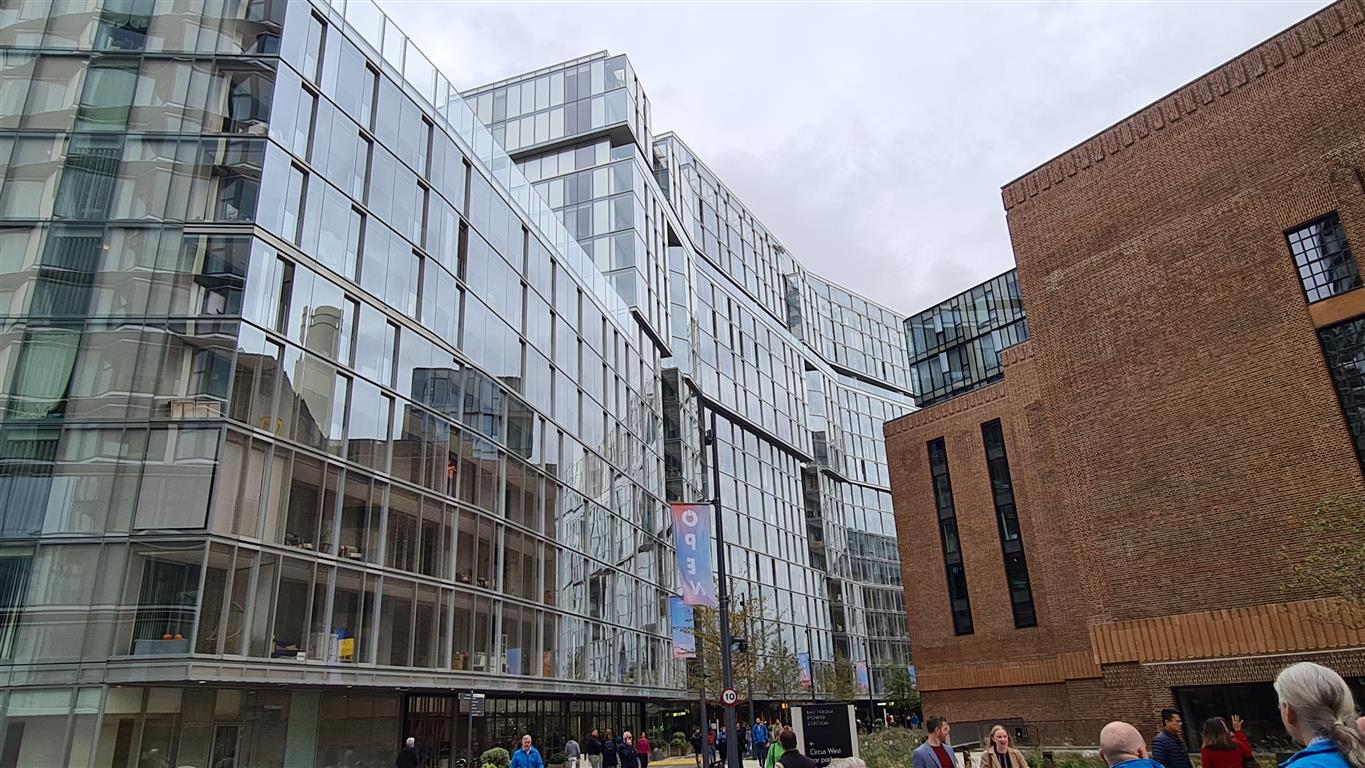
Seven years ago, the Guardian published an article saying that Londoners miss out as homes built as ‘safe deposit boxes’ for foreign buyers. They wrote:
“Sites for close to 30,000 homes are owned by just 10 investors in Hong Kong, China, Malaysia, Australia, Singapore and Sweden.”
A few years ago, Nicky Gavron, the former deputy mayor of London and member of the London assembly commented:
“There is a perception these major residential developments backed by international money, particularly in super-high towers, only serve a market for overseas investors who want to buy a luxury flat in a skyscraper to treat as a safety deposit box. Such properties often become buy-to-leave investments and don’t meet the needs of Londoners. London is in the midst of a housing crisis – what we need is mixed-income housing where people actually live.”
In a smaller but similar way to the New York phenomenon, there is very real possibility that Nine Elms could become an investment box for wealthy individuals who don’t really care about community nor public services and therefore neglect the democratic representation. They don’t really need democracy anyway as they can just pay to fulfil what they need.
Following the latest electoral commission work, Nine Elms ward has become a 2 Councillor ward. This is the same representation as Lavender Hill in Clapham Junction. However, 328 votes were enough to get elected in Nine Elms at the local election last May, while you needed 1391 votes in Lavender Hill. Therefore, those who can afford a flat in Nine Elms get also four times more voting power than in any other ward.
The Mayor of London has published his aspiration to make 35-50% of all new build affordable. However, if they carry on relying on private development to supply the housing demand for the people who need a place to live, it’s difficult to see how it is going to change.
In 2015, Wandsworth Council explained that they were reluctant to enforce objectives on percentage of affordable housing, as it would detract the private sector to build, and that a even a smaller amount of affordable dwellings was better than nothing. It was a pure ersatz of trickledown theory, grossly presented by the officer in charge of Wandsworth planning policies.
In fact, Wandsworth has missed 4 out of 5 times its global target of Social/Affordable Rent units for the last 5 years (and every single year if we exclude the Nine Elms area which benefits from an exemption on the standard policy on affordable homes).
And for all the permissions granted by Wandsworth Council in breach of its planning policies, there was the same excuse: “Benefits outweigh harm“.
This is exactly what Sam Stein explains in the case of New York City (One57 for instance got a tax break for building some affordable housing somewhere in … the Bronx! Doesn’t it resonate with the situation in Nine Elms?):
“The developer can violate rules to a certain degree if they do something else, that is to the public’s benefit.”
And just one year ago, this is again what Cllr Govindia, then Leader of the Council, was saying:
“If you think that you have a new way to look at planning well I think nothing will happen”.
After the Labour victory ending 44 years of Conservatives Council in Wandsworth, the new administration is focusing a lot of effort on changing the policy on housing in the borough.
They have previously announced their target of building an additional 1000 homes for Council rent, expand its property acquisition programme and the reintroduction of lifetime tenancies for social housing tenants.
In its latest publication, the Council aims to reduce the current housing waiting list while improving the conditions of living, by retaining larger homes and providing more council tenants with suitable properties, often with garden access.
It is always difficult to predict the outcome of those announcements, especially within the current period of economic turmoil and financial uncertainty. It will certainly need more than the will of a London borough to sort out our “housing crisis”. Watch this space to learn and understand more on the pros and cons of the Council’s decisions.


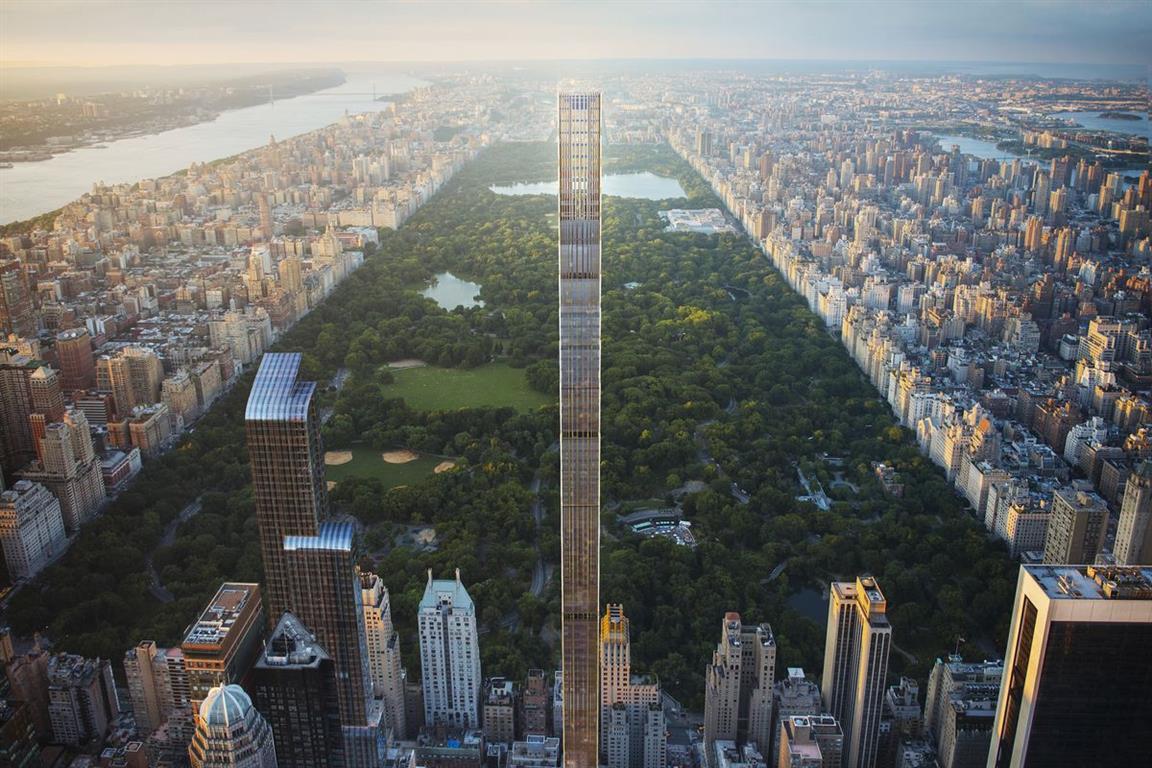

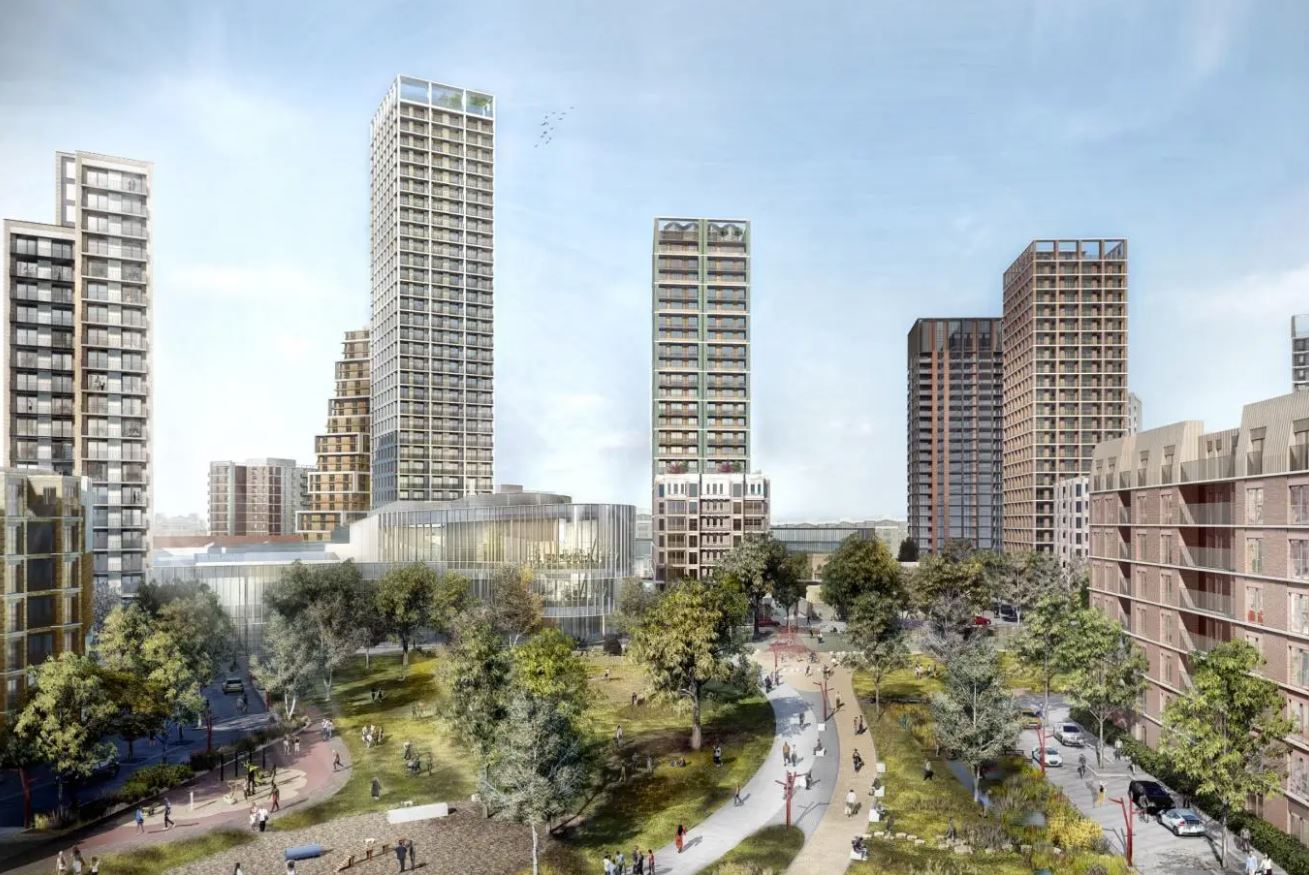










“Astonishing architecture” you wrote? Well, total madness and crazy architects who are only concerned with their ego. Nowadays the Steinway Tower is becoming a hazard. We had the Walkie Scorchie in London and now they have the Shardy Tower in NYC! Soon one of those billionaire madness will kill someone.
“Ice falling from this towering skyscraper in New York injured motorists and closed roads over the weekend. On Friday night, a motorist was injured when a chunk of ice fell from SHoP Architects’ recently completed 111 West 57th Street. A massive slab of ice fell 1,400 feet from the condo and crushed the roof and windshield of Deneice O’Connor’s car as she drove up Sixth Ave.”
https://luxurylaunches.com/buildings/chunks-of-ice-falling-from-soaring-skyscrapers-on-new-yorks-billionaires-row-has-injured-passersby-and-caused-closures.php
Apparently all the surrounding is closed now.